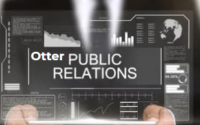New Technology Helping Reduce the Carbon Footprint
Even though the Trump administration is not pushing technological efficiency in their office buildings, on the local level there are many states, counties, and cities, who are plunging ahead with technology initiatives to help individuals and organizations save on their utility bills, among other things.
These initiatives are beginning to spawn more jobs in the tech sector and are helping to rewire the grid to become more customer friendly. As local governments continue their efforts to bring more efficiency and cost-saving to their communities, the resulting increase in technology standards and practices may mean a much cleaner and greener America — despite the current administration’s apparent lack of interest in the subject.
With nearly 2 million energy efficiency tech jobs in the United States today, it’s obvious that civic leaders are getting serious about slowing down global warming and eliminating carbon footprints. The Low Income Home Energy Assistance Program (LIHEAP), started during the Obama administration, is working with government leaders throughout the country to help lower income households find new and better ways to save on energy consumption — in areas like solar panels and micro-insulation. New York state has just announced that in conjunction with Habitat for Humanity and Fannie Mae they will be providing thousands of free smart thermostats to homeowners.
This kind of smart-home technology is driving more and more homeowners to take a closer look at new technologies that can significantly lower utility bills while helping to improve the environment as reported by bradshawlawnv.com. It’s time the federal government stepped in to help mobilize these efforts on a nation-wide basis, instead of letting the states go it alone, in a piecemeal fashion.

